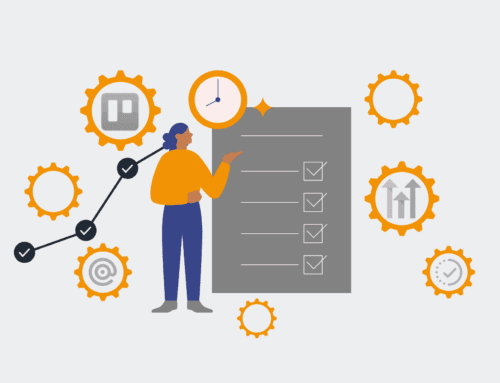How to Set Up Robust Data Privacy Protocols for AI-Driven Candidate Management
As AI transforms talent acquisition, streamlining everything from sourcing to screening, the imperative for robust data privacy protocols has never been greater. Managing sensitive candidate data with AI demands a strategic approach to ensure compliance, maintain trust, and mitigate significant legal and reputational risks. This guide provides actionable steps for HR leaders and operations professionals to establish comprehensive data privacy frameworks within their AI-powered candidate management systems, safeguarding personal information while harnessing the power of intelligent automation.
Step 1: Conduct a Comprehensive Data Inventory and Risk Assessment
The first critical step involves a thorough understanding of the data your AI systems collect, process, and store. Begin by mapping out all data flows, identifying every touchpoint where candidate information enters, moves through, and resides within your AI-driven recruitment platforms. This includes resumes, cover letters, assessment results, interview feedback, and any other personally identifiable information (PII). Categorize data by sensitivity, identifying which pieces are essential for AI functions and which might be considered superfluous or high-risk. Concurrently, conduct a detailed risk assessment to pinpoint potential vulnerabilities, such as unauthorized access, data breaches, or non-compliance with regulations like GDPR, CCPA, or local privacy laws. This foundational insight will inform all subsequent protocol development and ensure your efforts are targeted where they matter most.
Step 2: Define Clear Data Governance Policies and Roles
Effective data privacy hinges on clearly defined governance. Establish explicit policies outlining how candidate data should be collected, used, stored, retained, and deleted within your AI systems. This includes specifying consent mechanisms, data anonymization or pseudonymization standards, and data minimization principles – ensuring you only collect and process data absolutely necessary for recruitment purposes. Crucially, delineate clear roles and responsibilities for data owners, stewards, and users within your organization. Designate a Data Protection Officer (DPO) or an equivalent role to oversee compliance, manage privacy-related inquiries, and champion a culture of data privacy. These policies should be regularly reviewed and communicated to all relevant stakeholders, ensuring consistent understanding and adherence across the entire talent acquisition team.
Step 3: Implement Privacy-by-Design Principles in AI Systems
Integrating privacy considerations from the outset of your AI system development or integration is paramount. This means embedding privacy controls directly into the architecture and operational processes of your AI-driven candidate management platforms, rather than treating them as an afterthought. Prioritize data minimization, ensuring AI algorithms only access the least amount of data required for their function. Opt for technologies that support anonymization or pseudonymization by default where possible, especially for training AI models. Design systems that offer candidates transparent control over their data, including easy access to their information, options to rectify inaccuracies, and the right to erasure. Regularly assess new AI features or system updates through a privacy impact assessment (PIA) to identify and mitigate potential privacy risks before deployment, making privacy an intrinsic part of your AI strategy.
Step 4: Establish Robust Security Measures and Access Controls
Even the most comprehensive privacy policies are ineffective without stringent security measures. Implement multi-layered security protocols across all AI-driven candidate data platforms. This includes strong encryption for data both in transit and at rest, secure data storage solutions, and regular vulnerability scanning. Crucially, establish strict access controls based on the principle of least privilege, ensuring that only authorized personnel have access to sensitive candidate data, and only to the extent necessary for their role. Implement multi-factor authentication (MFA) for all system logins and maintain detailed audit trails of data access and modifications. Regular security audits and penetration testing by independent third parties are essential to identify and rectify potential weaknesses, fortifying your defenses against unauthorized access and cyber threats.
Step 5: Develop Comprehensive Incident Response and Breach Notification Plans
Despite best efforts, data incidents can occur. A well-defined incident response plan is crucial for managing potential data breaches effectively and minimizing their impact. Your plan should clearly outline the steps to detect, contain, investigate, and recover from a data breach, including identifying the root cause and implementing corrective actions. Crucially, it must detail the process for notifying affected candidates and relevant regulatory authorities within mandated timeframes, adhering strictly to regional privacy laws. Regular drills and simulations of data breach scenarios will ensure your team is prepared to act swiftly and decisively under pressure, minimizing damage and maintaining trust. Documenting every step of an incident response provides a clear record for internal review and external compliance audits.
Step 6: Ensure Regular Audits, Training, and Continuous Compliance Monitoring
Data privacy is not a one-time setup; it requires continuous vigilance. Schedule regular, independent audits of your AI-driven candidate management systems and privacy protocols to verify compliance with internal policies and external regulations. These audits should assess everything from data collection practices to security controls and employee adherence. Furthermore, implement mandatory and ongoing privacy training for all employees involved in handling candidate data or managing AI systems. This ensures they understand their responsibilities, recognize privacy risks, and know how to report potential issues. Stay abreast of evolving privacy laws and industry best practices, adapting your protocols as needed. Continuous monitoring and a culture of privacy awareness are essential to sustain a robust data protection framework in the dynamic landscape of AI and talent acquisition.
If you would like to read more, we recommend this article: The Intelligent Evolution of Talent Acquisition: Mastering AI & Automation









